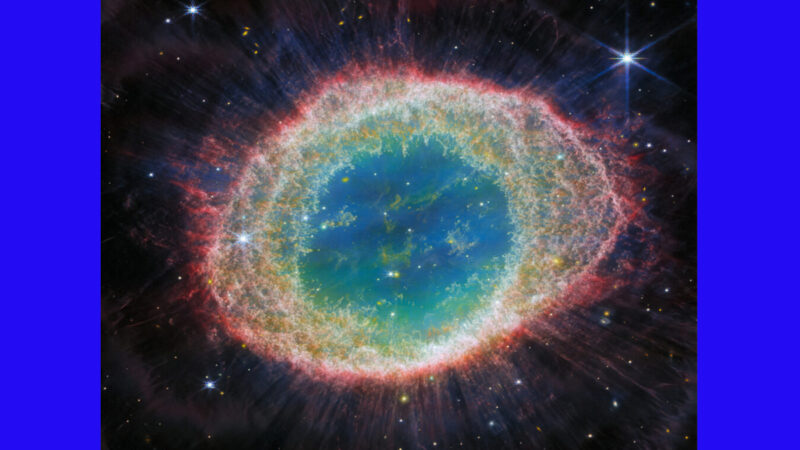NASA’s James Webb Space Telescope (JWST) has captured a stunning image of the Ring Nebula, a farewell display from a dying star located approximately 2,200 light-years away. The image, taken on August 21, showcases the intricate structure of the final phases of a sun-like star’s lifespan.
Similar to the Southern Ring Nebula, one of JWST’s initial images, the newly captured Ring Nebula image provides valuable insights into the concluding stages of a dying star’s life cycle. The Nebula’s inner ring reveals a filamentary structure, as displayed in the images obtained by the Near Infrared Camera (NIRCam) of JWST.
The Ring Nebula appears as a twisted doughnut, with various colors highlighting its different regions. The inner cavity displays shades of blue and green, while the rings’ inner areas exhibit orange hues. Pink hues dominate the outer regions, and the rings’ inner regions appear as distinct filaments.
In the heart of the Nebula structure lies a star approaching its destiny’s end. As it nears the end of its stellar evolution, the star will transform into a white dwarf, often called a “corpse star.”
Roger Wesson, an expert from Cardiff University, commented on the remarkable detail captured in the JWST images. He explained that the bright ring of the Nebula consists of approximately 20,000 clumps of dense molecular hydrogen gas, each comparable in mass to Earth.
Previously, planetary nebulae were perceived as simple round objects with a dying star at their core, owing to their fuzzy, planet-like appearance when observed through small telescopes. However, more recent observations have revealed that most planetary nebulae possess intricate structures. The Ring Nebula is an excellent subject for unraveling the mysteries surrounding these objects.
Inside the ring, a narrow band of polycyclic aromatic hydrocarbons (PAHs) can be found, while peculiar “spikes” protrude from the central star towards the outer ring. These spikes are prominent in infrared wavelengths but faintly visible in the Bob Space Telescope image.
The clear and sharp images provided by JWST’s Mid-Infrared Instrument (MIRI) show a faint molecular halo beyond the bright ring. According to Wesson, these new MIRI images offer the most detailed view yet of this additional feature.
JWST captured the Ring Nebula using the Near Infrared Camera (NIRCam) and Mid-Infrared Instrument (MIRI), which detect infrared wavelengths of light invisible to the human eye. The images showcase intricate details, including the presence of approximately ten concentric arcs beyond the main ring.
Wesson notes that these rings suggest the existence of a companion star orbiting the central star at a distance similar to the distance between Pluto and the Sun. This subtle effect had remained unnoticed due to the lack of sensitivity and spatial resolution in previous telescopes.
The James Webb Space Telescope’s recent images of the Ring Nebula provide scientists with valuable information to further comprehend the complex structures and phenomena associated with planetary nebulae.
